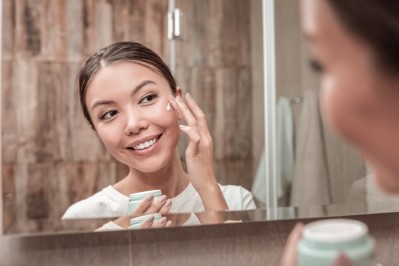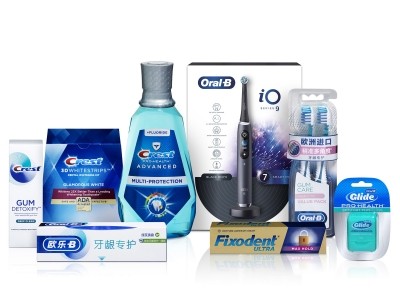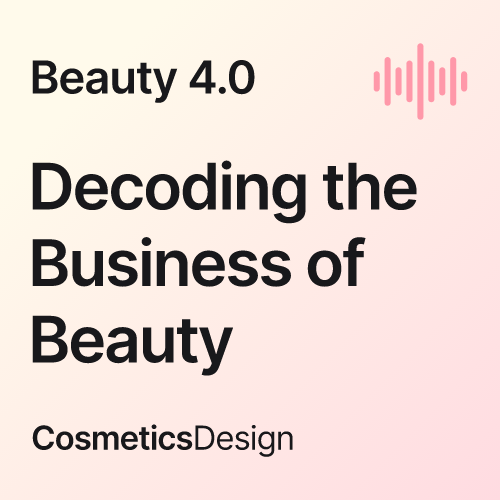'Constructive disruption': How P&G is trying to close the physical and e-commerce shopping divide
![P&G shares how it is striving to bridge the divide between offline and online retail. [P&G / Olay]](/var/wrbm_gb_food_pharma/storage/images/_aliases/wrbm_large/publications/cosmetics/cosmeticsdesign-asia.com/article/2021/02/08/how-p-g-is-trying-to-close-the-physical-and-e-commerce-shopping-divide/12149175-1-eng-GB/How-P-G-is-trying-to-close-the-physical-and-e-commerce-shopping-divide.jpg)
While e-commerce allows the brand to be very targeted with its marketing and makes the process more convenient for consumers, it inevitably loses some nuances that consumers experience with offline shopping.
“There are multiple unconscious physical interactions that we have with the product on the shelf. For example, many people in the beauty category open the products and smell them, and this is something that you can't do in an e-business,” said Alexandra Vogler, senior director for marketing and e-business, Asia, Middle East and Africa for Procter & Gamble.
Speaking at the inaugural Shopee Brands Summit, Vogler said the company has had to find a way to virtually supplement these physical interactions that consumers have offline.
For instance, for the recent launch of its Pantene Micellar Shampoo, it had to look at how to demonstrate and translate the scent of the products visually.
“Any live interactions on the platform are a great aid. Because not only do you have live demonstration capabilities, you can bring in a person using the product, you can bring in an expert talking about the product. You can also fuel two-way communication to really satisfy the needs of the customers at that point in time,” said Vogler.
Vogler stressed that this was more than trying to imitate offline experiences for the online arena.
“I emphasis the whole idea of constructive disruption, which is not necessarily trying to replicate what we see offline into online, but maybe thinking about it differently.”
She elaborated with the example of cross-category purchases, which was important for a conglomerate like P&G.
“We have many different categories and we wanted to drive more cross-category purchases, which is easy in a physical store between adjacent categories; say laundry and fabric softner, because they're next to each other. But in an online environment where people enter through search, it's not that evident.”
However, instead of recreating an online shelf, the company worked with Shopee on the Show Me My Home campaign, which organised products around the different rooms of the house.
“We developed was a microsite, which wasn't a mimic of the offline shelf, but it was rooms in a house. And this really helped drive cross-category purchase. This was a good partnership that we rolled out across all of SEA ultimately, and which really helped drive cross-category purchase.”
Vogler stressed that replicating a digital shelf online would not have been as effective as the Show Me My Home concept.
“I think the issue is trying to replicate versus reinvent. I really believe that if we would have tried in that example, to recreate a digital shelf, it wouldn't have succeeded as much. So, I think it's really being open to disrupting the way things are done, not merely replicating.”
Future online trends
Vogler predicts that there will be opportunities in the future for brands to use more fun elements to create shopper-tainment or retail-tainment experience for consumers.
At the same time, she believes consumers will become more challenging in terms of demanding faster deliveries and more.
“I do think that consumers are becoming more demanding. We see it, for example, on ratings and reviews, but also talking to the store seller. I think these are spaces that we as an industry have to figure out that two-way communication also.”
Additionally, she expects to see higher demand for personalised content in the digital space.
“One of the things that we're seeing as more and more customers come online, is they are becoming more discriminating. So, there's a lot of requests for more personalised content, more personalised features.”
![Health and beauty emerged as one of the top three categories on Shopee’s 4.4 Mega Shopping Day. [GettyImages]](/var/wrbm_gb_food_pharma/storage/images/_aliases/wrbm_medium/publications/cosmetics/cosmeticsdesign-asia.com/headlines/market-trends/shopee-4.4-facial-masks-and-premium-brands-dominates-platform-s-first-mega-festival-of-the-year/12380241-1-eng-GB/Shopee-4.4-Facial-masks-and-premium-brands-dominates-platform-s-first-mega-festival-of-the-year.jpg)


![SK-II is reinforcing its e-commerce business with personalised beauty initiatives. [P&G / SK-II]](/var/wrbm_gb_food_pharma/storage/images/_aliases/wrbm_medium/publications/cosmetics/cosmeticsdesign-asia.com/headlines/market-trends/sk-ii-turns-to-personalisation-to-forge-closer-consumer-connections-via-e-commerce/12161195-1-eng-GB/SK-II-turns-to-personalisation-to-forge-closer-consumer-connections-via-e-commerce.png)

![Indus Valley is working to corner 30% of India's online premium boxed hair colour market. [Indus Valley]](/var/wrbm_gb_food_pharma/storage/images/_aliases/wrbm_tiny/publications/cosmetics/cosmeticsdesign-asia.com/article/2024/07/26/indus-valley-aims-to-secure-30-of-india-s-online-premium-hair-colour-market-with-organic-offerings/17594932-5-eng-GB/Indus-Valley-aims-to-secure-30-of-India-s-online-premium-hair-colour-market-with-organic-offerings.jpg)
![[Getty Images]](/var/wrbm_gb_food_pharma/storage/images/_aliases/wrbm_tiny/publications/cosmetics/cosmeticsdesign-asia.com/china/china-focus-latest-developments-in-china-s-booming-beauty-market25/17606695-1-eng-GB/China-focus-Latest-developments-in-China-s-booming-beauty-market.jpg)
![Kosé has launched makeup brand Visée in Singapore as part of plans to reinforce its position in SEA. [Visée]](/var/wrbm_gb_food_pharma/storage/images/_aliases/wrbm_tiny/publications/cosmetics/cosmeticsdesign-asia.com/headlines/business-financial/visee-singapore-kose-aims-to-enhance-brand-visibility-in-sea-with-new-launch/17587264-1-eng-GB/Visee-Singapore-Kose-aims-to-enhance-brand-visibility-in-SEA-with-new-launch.jpg)
![ble C&C is set on reinforcing its competitiveness in China’s beauty market. [Missha]](/var/wrbm_gb_food_pharma/storage/images/_aliases/wrbm_tiny/publications/cosmetics/cosmeticsdesign-asia.com/headlines/business-financial/able-c-c-aims-to-strengthen-competitiveness-in-china-through-online-expansion-kol-collabs/17591626-1-eng-GB/Able-C-C-aims-to-strengthen-competitiveness-in-China-through-online-expansion-KOL-collabs.jpg)

![LG H&H genetic study says 23 genetic regions affect natural skin tone. [Getty Images]](/var/wrbm_gb_food_pharma/storage/images/_aliases/wrbm_tiny/publications/cosmetics/cosmeticsdesign-asia.com/article/2024/07/23/lg-h-h-discovery-of-genetic-skin-tone-factors-in-east-asians-potentially-key-to-skin-radiance-developments/17587210-1-eng-GB/LG-H-H-discovery-of-genetic-skin-tone-factors-in-East-Asians-potentially-key-to-skin-radiance-developments.jpg)

![DR.CI:LABO expects brand-supplier partnerships gain more public prominence as consumers interest in skin care grows online. [Dr.Ci:Labo]](/var/wrbm_gb_food_pharma/storage/images/_aliases/wrbm_tiny/publications/cosmetics/cosmeticsdesign-asia.com/article/2024/07/22/brand-supplier-partnerships-will-come-to-the-fore-amid-the-online-skin-care-landscape-dr.ci-labo/17576755-1-eng-GB/Brand-supplier-partnerships-will-come-to-the-fore-amid-the-online-skin-care-landscape-DR.CI-LABO.png)